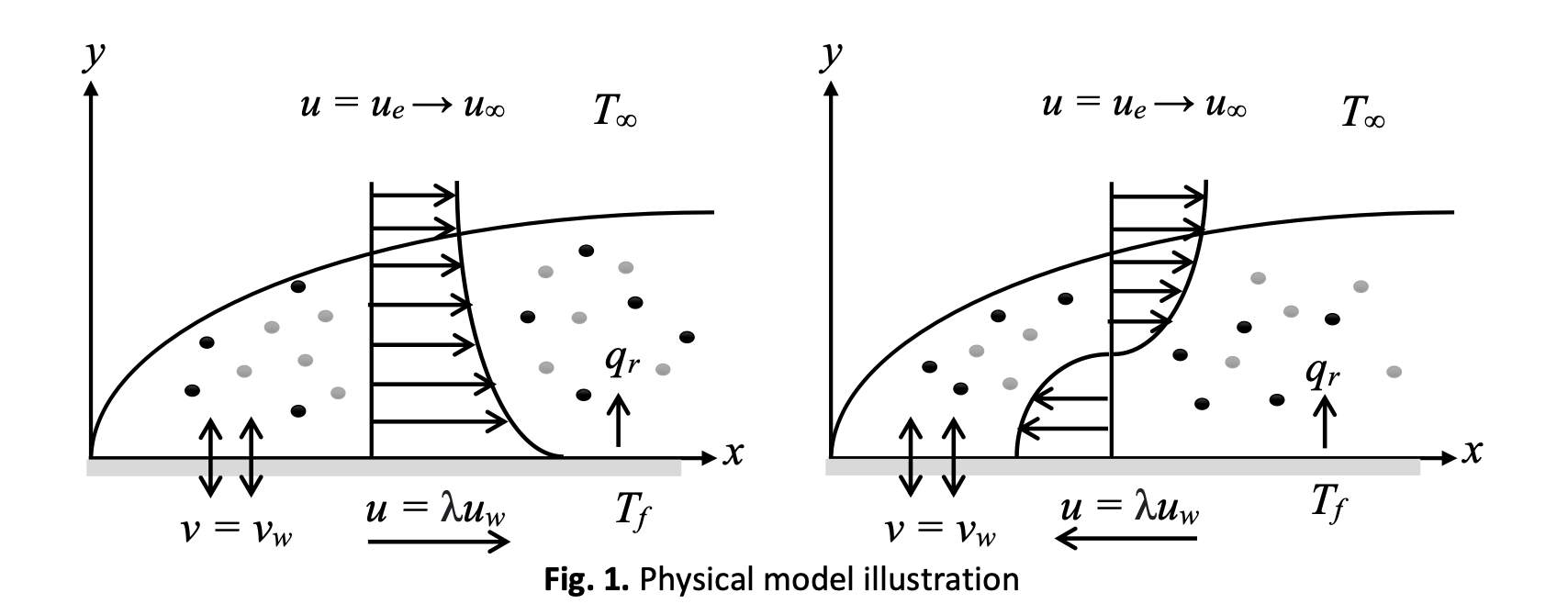Radiative Blasius Hybrid Nanofluid Flow over a Permeable Moving Surface with Convective Boundary Condition
DOI:
https://doi.org/10.37934/arfmts.100.3.115132Keywords:
Hybrid nanofluid, Blasius flow, suction, convective boundary condition, thermal radiationAbstract
The Blasius flow over a movable and permeable plate is envisaged in this study. Water-based hybrid nanofluid is incorporated with the insertion of thermal radiation, suction, and a convectively heated plate. The governing partial differential equations that simulate the fluid model are modified to ordinary differential equations through the implementation of self-similar transformation. A numerical solver known as bvp4c in Matlab is adopted to solve the problem numerically through the finite difference code with the Lobatto IIIa formula. Non-unique solutions are acquirable when the plate and the flow move in a dissimilar direction. As conducting the stability analysis, it is validated that the first solution is stable and reliable. The findings reveal that the imposition of stronger thermal radiation and greater Biot number for convection can lead to a better heat transfer performance. The 2% volume fraction of copper in the 1% volume fraction of alumina nanofluid composition would lead to greater skin friction when the plate is moving oppositely from the flow direction compared to the lesser volume fraction of copper. The boundary layer separation also can be efficiently prevented by composing a 2% copper volume fraction in the 1% alumina-water nanofluid compared to the lesser copper volume fraction.
Downloads

































